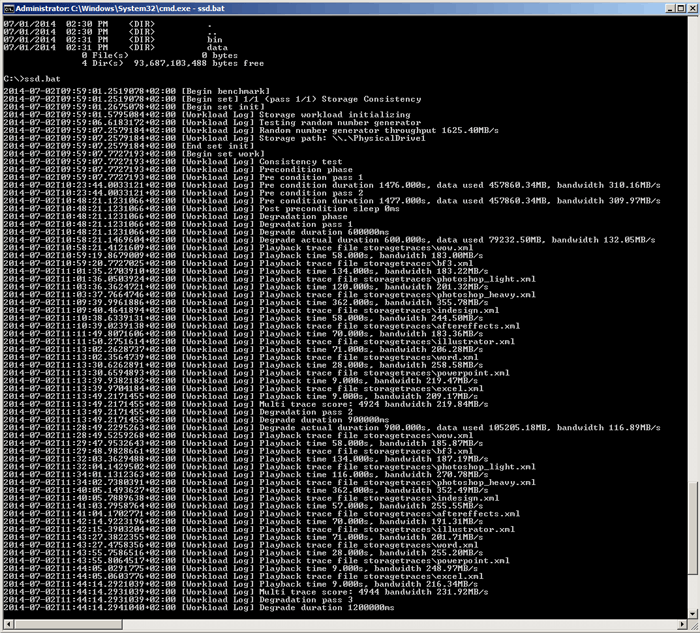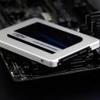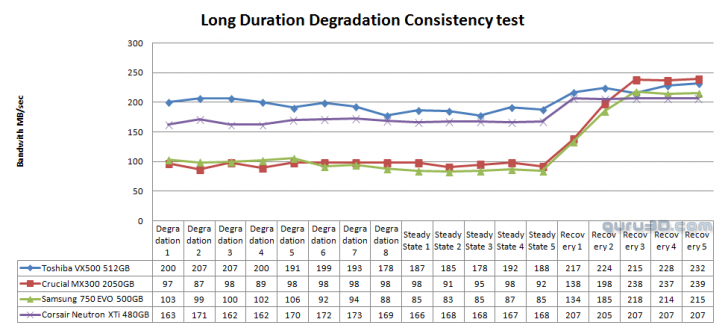SSD Performance Long Duration Degradation Consistency test
Testing Performance Degradation
Recently added to our test suite is a Long Duration Degradation Consistency test. In this test we look at SSD performance after using it continuously with heavy workloads for almost a full day. Basically we fire off scripted traces of workloads emulating games, Excel and Photoshop workload usage. In total there are workloads of 18 phases that will test the throughput of the SSD, 8 Degradation Phases, 5 Steady State Phases and 5 runs of the Recovery Phases. In order to complete these tests we need almost a full day.
This test alone will write roughly 3.2 TB / 3,200 GB of data to the SSD. So if you normally write 10 GB of data per day on your SSD, with this test during this one day we emulate roughly 320 days of usage. And what we are looking for is the answer to this question, how will the SSD perform after heavy (massive) usage.

This consistency test takes roughly a day to finish and is based on multiple game and content creation workloads
In several stages we'll look at the performance bandwidth. If the SSD is good, a current SATA 3 class SSD after almost a day of stress testing should show consistent performance. A good SSD will show a flat line in-between 200 to 300 MB/sec in terms of storage bandwidth.
In each tested phase we run multiple workloads including games like Battlefield 3 and World of Warcraft. On the other side we have Adobe After Effects, Illustrator, InDesign, Photoshop Heavy and Photoshop Light, Microsoft Excel, Powerpoint and Word, then basically the test will perform this pattern:
- PRECONDITIONING – The entire SSD is filled twice sequentially with random data of a 128 KB file size. The second run accounts for overprovisioning that would have escaped the first.
- DEGRADATION PHASE – The SSD is hit with random writes of between 4 KB and 1 MB for 10 minutes and then a single pass performance test is done of each application. The cycle is repeated 8 times, and with each time, the duration of random writes increases by 5 minutes.
- STEADY STATE PHASE – The drive is hit with random writes of between 4 KB and 1 MB for 45 minutes before each application is put through a performance test. This process is repeated 5 times.
- RECOVERY PHASE – The SSD is allowed to idle for 5 minutes before and between performance tests of all applications. This is repeated 5 times which accounts for garbage collection.
- CLEANUP – The entire SSD is written with zero data at a write size of 128 KB.
Simply put, a straight line as high and straight as possible in the upper chart = good.
Performance degrades to 80~90 MB/s and picks up to decent levels in the recovery phase (which is good). This test basically indicates that through many years of usage in just 24 hours, your SSD will either retain very fast performance or slow down.


